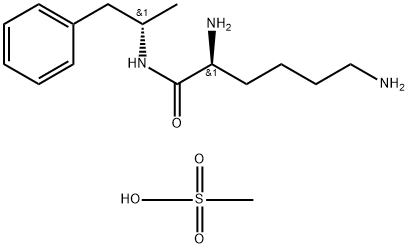608137-33-3

SAFETY INFORMATION
| Signal word | Danger |
|---|---|
| Pictogram(s) |
 Flame Flammables GHS02  Skull and Crossbones Acute Toxicity GHS06  Health Hazard GHS08 |
| GHS Hazard Statements |
H225:Flammable liquids H370:Specific target organ toxicity, single exposure |
| Precautionary Statement Codes |
P210:Keep away from heat/sparks/open flames/hot surfaces. — No smoking. P260:Do not breathe dust/fume/gas/mist/vapours/spray. P280:Wear protective gloves/protective clothing/eye protection/face protection. P311:Call a POISON CENTER or doctor/physician. P301+P310:IF SWALLOWED: Immediately call a POISON CENTER or doctor/physician. |
COMPUTED DESCRIPTORS
| Molecular Weight | 455.6 g/mol |
|---|---|
| Hydrogen Bond Donor Count | 5 |
| Hydrogen Bond Acceptor Count | 9 |
| Rotatable Bond Count | 8 |
| Exact Mass | 455.17599275 g/mol |
| Monoisotopic Mass | 455.17599275 g/mol |
| Topological Polar Surface Area | 207 Ų |
| Heavy Atom Count | 29 |
| Formal Charge | 0 |
| Complexity | 344 |
| Isotope Atom Count | 0 |
| Defined Atom Stereocenter Count | 2 |
| Undefined Atom Stereocenter Count | 0 |
| Defined Bond Stereocenter Count | 0 |
| Undefined Bond Stereocenter Count | 0 |
| Covalently-Bonded Unit Count | 3 |
| Compound Is Canonicalized | Yes |
PRODUCT INTRODUCTION
description
Lisdexamfetamine Dimesylate is the dimesylate form and prodrug of the d-isomer of amphetamine, a non-catecholamine sympathomimetic amine with central nervous system (CNS) stimulating activity. Upon administration, lisdexamphetamine is converted to dextroamphetamine through cleavage of the lysine group. Dextroamphetamine acts by facilitating the release of catecholamines, particularly noradrenaline and dopamine, from its storage sites in nerve terminals in the CNS, and inhibits their uptake within the mesocorticolimbic system, a major component of the brain reward system, resulting in measurable behavioral changes such as euphoria, mental alertness and excitement and appetite suppression. As a CNS stimulant, this agent may increase blood pressure.